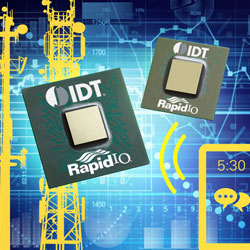Data de postagem: 2016-01-05
Integrated Device Technology (IDT) has launched a heterogeneous mobile edge computing platform that can perform real-time big data analysis and deep learning through low-latency computing at the edge of the network. The platform was developed by IDT's Open High-Performance Analysis and Computing (HPAC) laboratory, leverages modules currently in production, and is based on innovation and collaboration with NVIDIA, Prodrive Technologies, and Concurrent Technologies PLCs.
Sailesh said, "Network operators are looking for ways to add analytics to a large amount of unstructured data near users by pushing more computing power to the edge of the network rather than sending data to the core of the network data center via backhaul. . "Chittipeddi, Chief Technology Officer and Vice President of Global Operations, IDT. "IDT's mobile edge computing platform provides a fast path for network and data center operators and system integrators to connect edge-based accelerators with IDT's low-latency RapidIO products. With the It's becoming increasingly important that high-bandwidth streaming video and related analytics need to happen near the last mile where the user is. "
The new platform is based on a 1U server and has heterogeneous computing capabilities of the NVIDIA Tegra K1 processor and x86 CPU. The computing elements are connected using RapidIO fiber technology, with a switching delay of approximately 100ns and a 20Gbps port, while new versions using RapidIO 10xN technology will accelerate to 50Gbps. The platform can be populated with the appropriate combination of processor type and accelerator capacity to optimize deep learning and analysis workloads at the edge of the wireless network. Co-located with base station, ATCA size can be supported if needed. Operators can deploy modular components for server functions in wireless base stations, cloud radio access networks (C-RAN) or central offices.
Five 1U systems can be meshed together in a network that can support up to 60 teraflops of computing power using the energy-efficient NVIDIA Tegra processor. In a central office, an industry-standard data center rack can connect up to 40 1U systems to provide up to half a petabyte of computing performance.
Pieter Janssen, CEO of Prodrive Technologies, added, "Prodrive Technologies has developed a broad set of RapidIO-based servers and supercomputing solutions for a variety of markets. Our latest collaboration with IDT on heterogeneous computing is in the original Mobile The Edge Computing Platform is built on the RapidIO rack-top switching solution we have developed for the C-RAN and high-performance computing markets. "The original mobile edge computing platform focused on GPU and x86 technologies. The company said that other versions under development are based on ARM, DSP, FPGA and PowerPC options.
